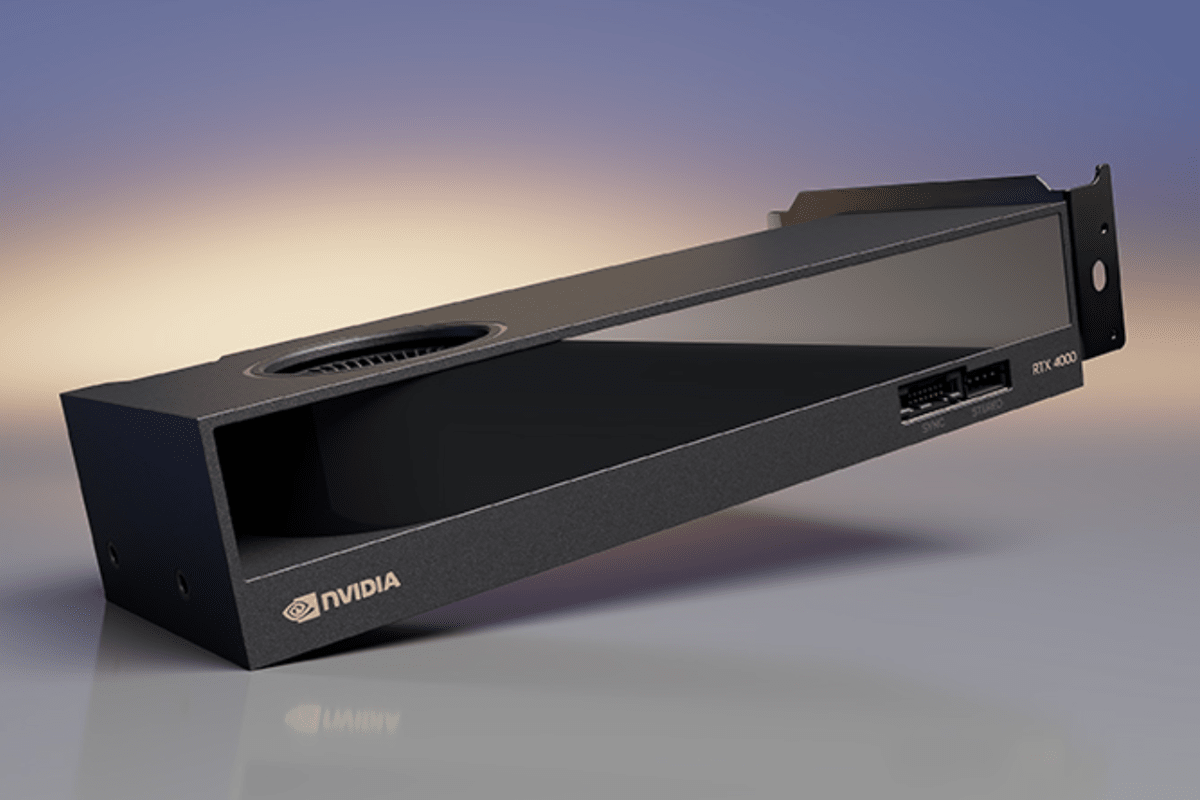Nvidia has added five new mobile GPUs to its series designed for workstations, known as “RTX Ada.” The company has also introduced an updated desktop RTX series graphics card called the RTX 4000 ADA SFF, designed for professional use. It comes equipped with 6144 CUDA cores, 192 Tensors, and 48 RT cores, providing up to 19.2 TFLOPS of computing power for single-precision workloads and up to 306.8 TFLOPS in Tensor-based tests.
The card is small and features a dual-slot design with a single fan, consuming only 70W, and does not require any external power connectors. It has 20GB GDDR6 memory across a 160-bit interface, with a memory clock of 16 Gbps, and is based on the AD104 chip. The RTX 4000 ADA SFF is available at launch for $1250.
Small workstations today often have powerful CPUs but are limited by their inability to accommodate high-performance graphics cards. Many professionals who use compact workstations face the challenge of using entry-level GPUs with limited performance.
However, Nvidia’s RTX 4000 SFF Ada Generation graphics card specifically addresses this issue. This compact card delivers powerful graphics, consuming only 70 watts of power as it is powered by the AD104 GPU, which has 6144 CUDA cores enabled out of 7680, and is the same GPU found in the RTX 4070 Ti but with fewer active cores to reduce power consumption.
The GPU’s boost frequency is limited to around 1560 MHz to further reduce the overall power consumption of the board. However, the card boasts a generous 20GB GDDR6 memory with ECC, connected to the GPU via a 160-bit interface. It provides a significant amount of memory for use in workstation applications.
Nvidia has not provided detailed specifications for the NVENC encoders and NVDEC decoders on the RTX 4000 SFF Ada GPU, although it is known that the card has two of each. However, they are assumed to function comparably to the NVENC and NVDEC on other Ada cards. The performance and video encoding quality can be evaluated using recent GPU comparisons.
The RTX 4000 SFF Ada GPU can achieve a top single precision performance of up to 19.2 TFLOPS, which is equivalent to a GeForce RTX 3070, thanks to the GA104 chip. In addition, it offers a maximum RT performance of 44.3 TFLOPS and a peak FP8/INT8 tensor performance of 306.8 TFLOPS/TOPS. Although this performance may not be comparable to that of Nvidia’s more powerful RTX 6000 Ada Generation or GeForce RTX 4090, it is still impressive.
Nonetheless, it is a noteworthy low-profile dual-slot graphics card that can be accommodated in virtually any desktop computer, even without an available auxiliary PCIe power connector. The RTX 4000 SFF Ada GPU showcases an impressive INT8 TFLOPS performance of 153/306.8 (without and with sparsity, respectively) that is comparable to the much pricier and power-hungry Nvidia GeForce RTX 3090 Ti. Designed specifically for workstations, the Nvidia RTX 4000 SFF Ada Generation graphics card is packed with valuable features, including four DisplayPort 1.4a connectors, a 3-pin mini-DIN connector for stereoscopic 3D output, and Frame Lock capability support for multi-display applications.
With its compact size, low power consumption, and broad compatibility, this GPU is an appealing option for systems that require multiple graphics cards to run multi-display and video wall applications without needing a high-wattage PSU. Due to its versatility, the RTX 4000 Ada Generation is utilized in various industries, including aerospace, healthcare, military, pro-A/V, digital signage, and security.
In April, Nvidia plans to make its newly released RTX 4000 SFF graphics card for professional visualization applications available through its distribution partners, which include PNY, Ryoyo Electro, and Leadtek. Initially, the graphics card will only be offered through distribution partners, but it is expected that later in the year, workstation manufacturers will also provide this product.


